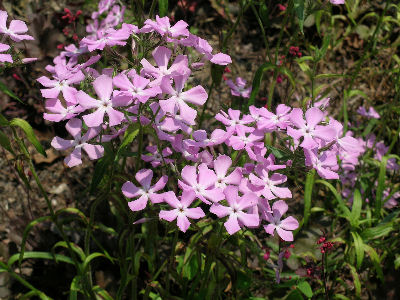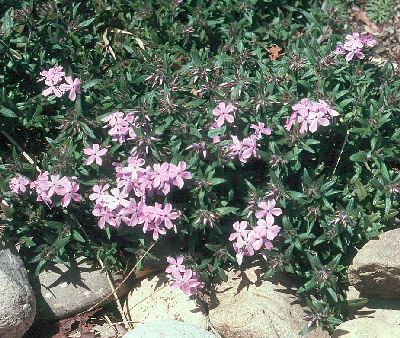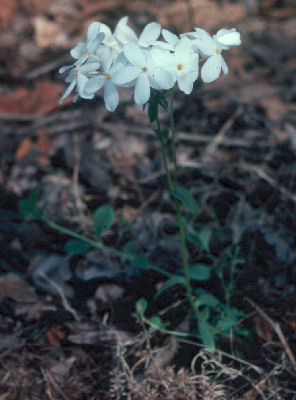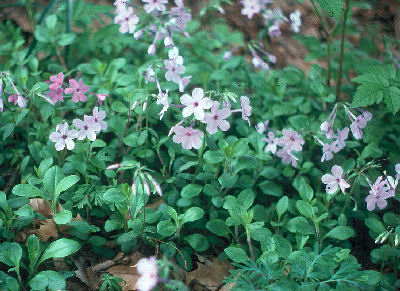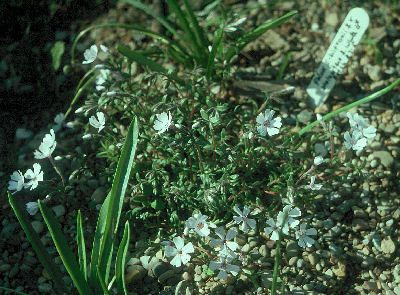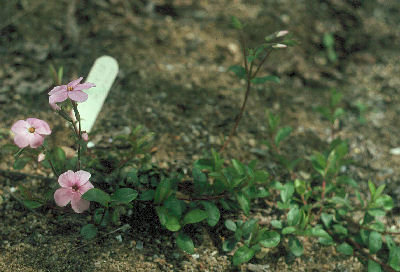Medium-size Phlox
Pilosa Group
Phlox amoena
(Hairy phlox) -
Range: southern Kentucky and western North Carolina south to northern
Florida. Habitat: dry open woods. Height: 25 to 45cm. Bloom time:
spring. Flower color: purple to pink. This has been a grudging grower
for us in western Pennsylvania, not lasting more than a couple of years
and probably not fully hardy. In general it is not as good a
garden plant as P.
divaricata or P.
pilosa. Phlox ×procumbens,
a hybrid between P.
stolonifera and P.
subulata, has been sold under the incorrect name P. amoena.Pilosa Group
'Cabot Blue' has flowers of a violet color.
Phlox divaricata (Wild blue phlox) - Range: southern Ontario to Minnesota and south to Georgia and Louisiana. Habitat: open woods. Height: 30 to 45cm. Bloom time: spring. Flower color: lilac to violet. There are two subspecies. P. divaricata ssp. divaricata of the East, with notched petals, meets P. d. ssp. laphamii of the Midwest, with unnotched petals, along a line from Illinois to Georgia, but within the wide range of each subspecies there is little geographic variation. This is in great contrast to P. pilosa. P. divaricata naturalizes very well in cultivation. There is a long list of named selections, although almost all of them could be matched to individuals within a large naturalized cultivated colony. Although it is a woodland plant, P. divaricata needs some exposure at least to dappled sun to be free of mildew in the garden. Some selections have been very short-lived in our garden, but they will seed abundantly if allowed.
'Blue Elf' is a small selection about 15cm tall.
'Blue Moon' has large blue flowers with wide petals.
'Clouds of Perfume' is a hyperbolically named selection with lavender-blue flowers and about the usual amount of fragrance for the species. I would give it about a 4 on an olfactory scale from 0 to 10, where 10 is nose inside an Easter lily flower.
'Dirigo Ice' has pale blue flowers.
'Fuller's White' has pure white flowers and, if introduced into a naturalized colony will ensure that there are white individuals present ever after.
'Louisiana' has purple-blue flowers with a reddish eye.
'Parksville Beach' has purple-pink flowers.
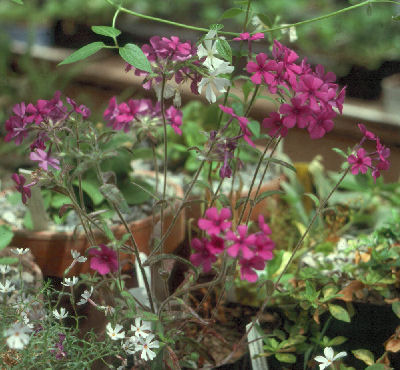 |
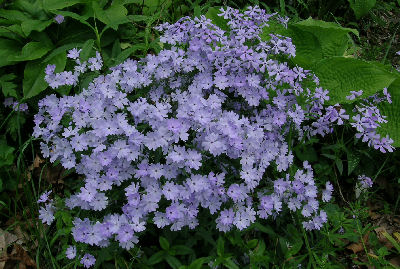 |
